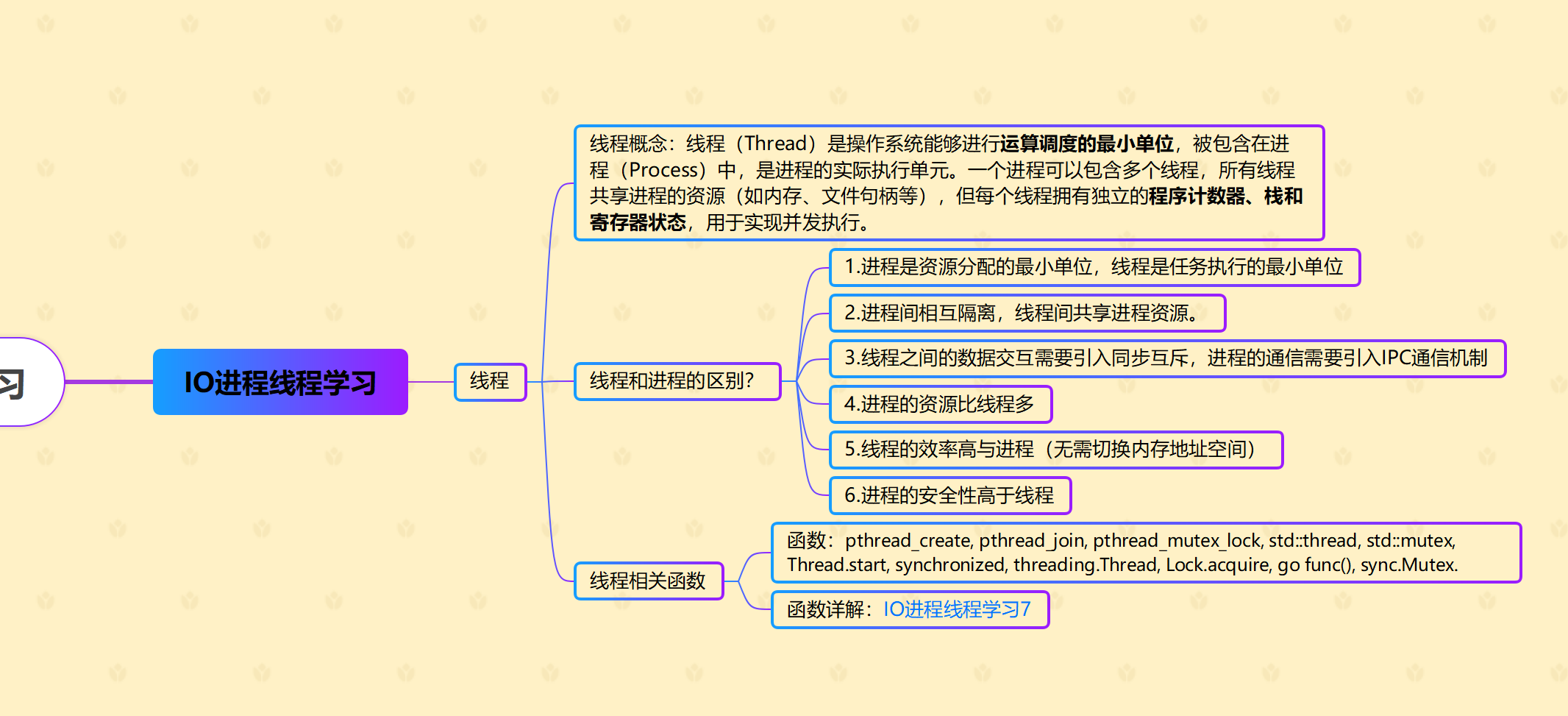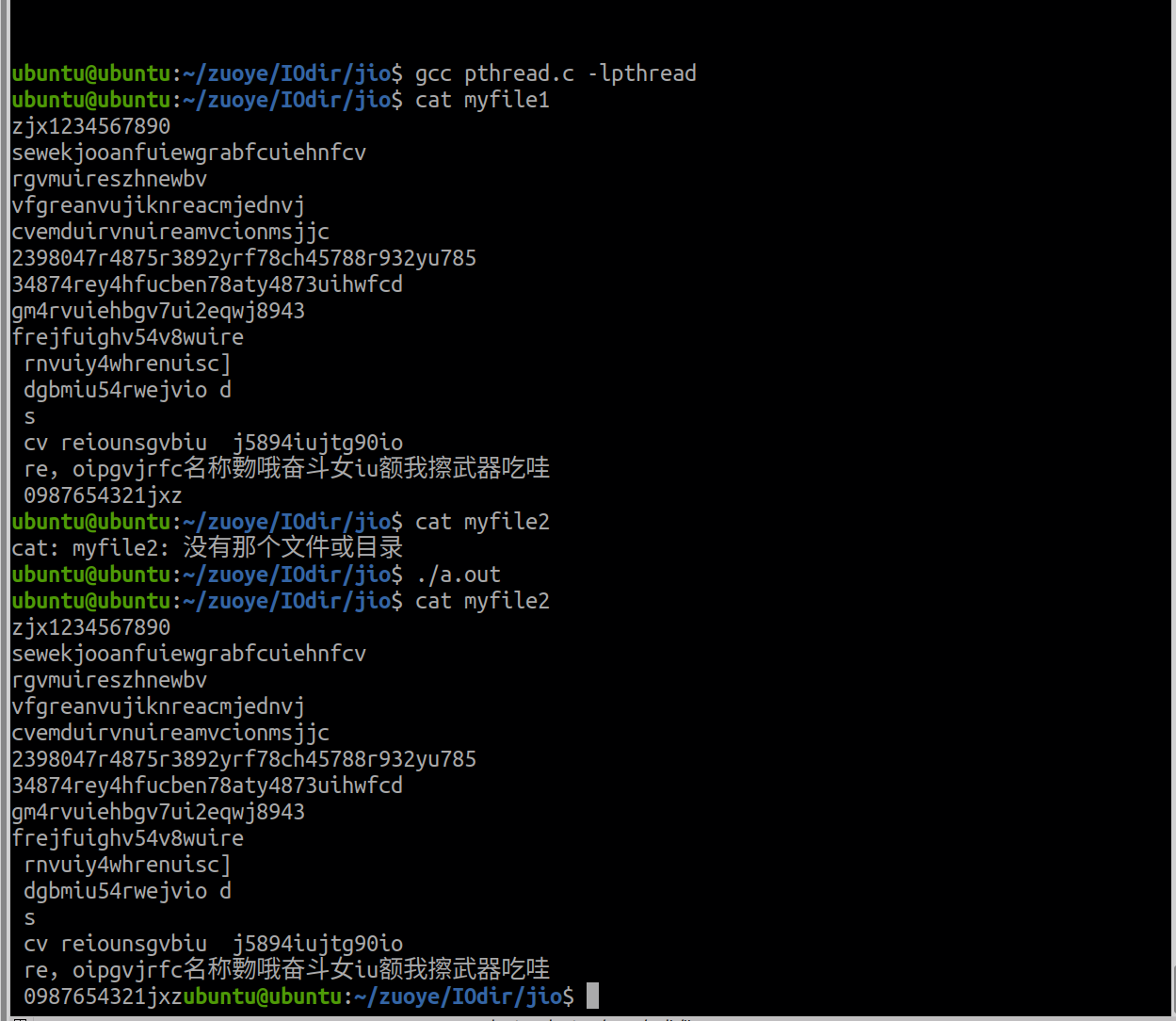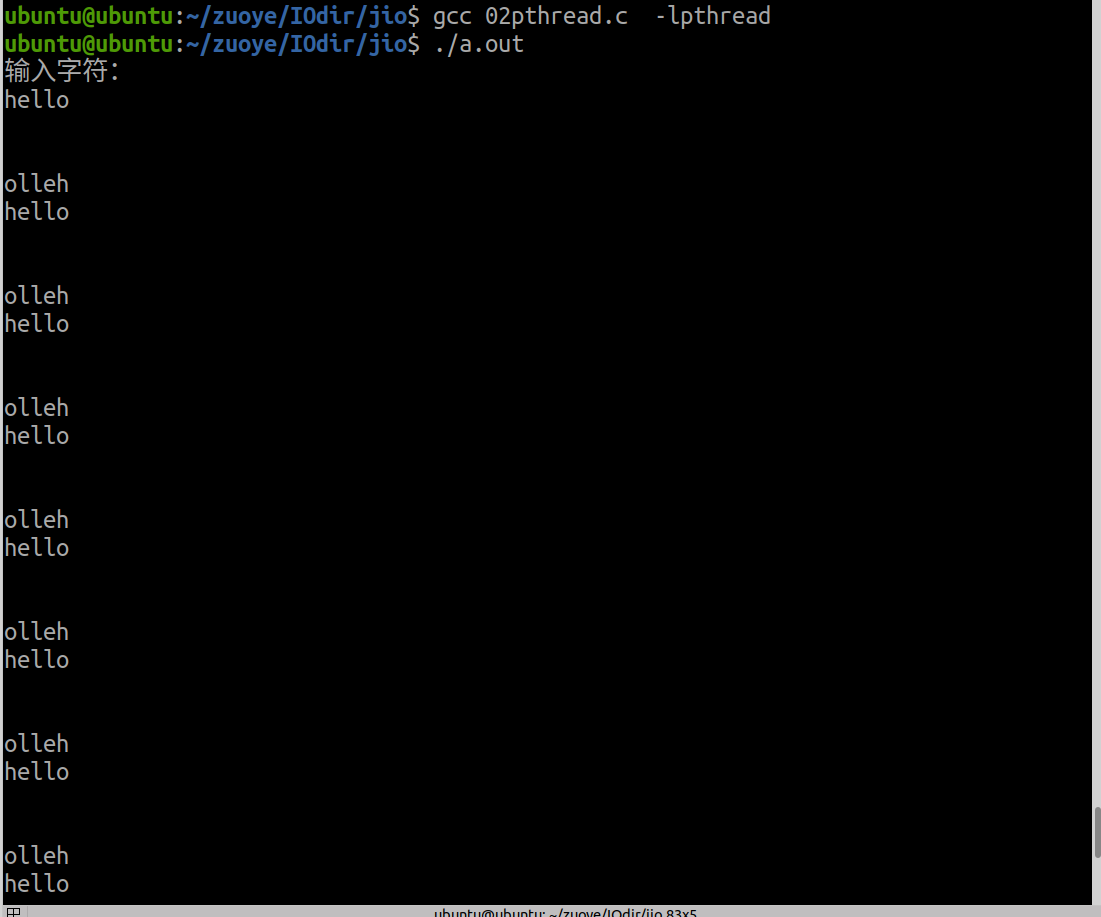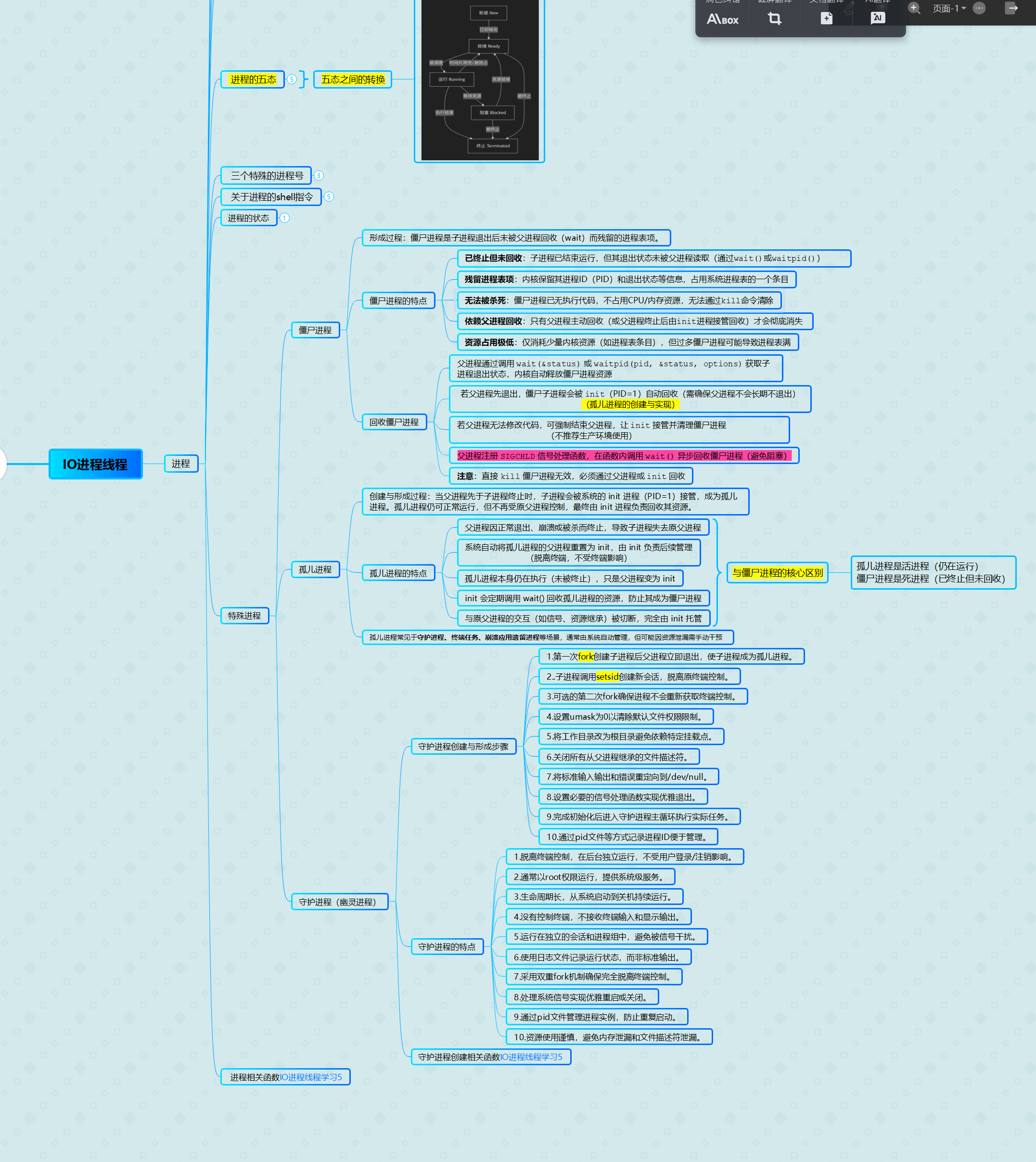嵌入式开发学习———Linux环境下IO进程线程学习(五)
进程
僵尸进程
僵尸进程是子进程终止后,父进程未调用wait()或waitpid()回收其退出状态,导致进程描述符仍留在系统中。此时子进程称为“僵尸进程”。
#include <unistd.h>
#include <stdlib.h>
int main() {pid_t pid = fork();if (pid == 0) exit(0); // 子进程立即退出else sleep(60); // 父进程不回收子进程return 0;
}
孤儿进程
孤儿进程是父进程先于子进程终止,子进程被init进程(PID=1)接管。孤儿进程不会对系统造成危害。
#include <unistd.h>
#include <stdlib.h>
int main() {pid_t pid = fork();if (pid == 0) sleep(60); // 子进程存活else exit(0); // 父进程先退出return 0;
}
守护进程
守护进程是在后台长期运行的独立进程,通常脱离终端控制。通过fork()后让父进程退出,子进程调用setsid()创建新会话。
#include <unistd.h>
#include <stdlib.h>
int main() {pid_t pid = fork();if (pid > 0) exit(0); // 父进程退出setsid(); // 子进程创建新会话while (1) sleep(1); // 守护任务return 0;
}
线程
线程概念
线程是程序执行的最小单位,属于同一进程的多个线程共享内存空间,但拥有独立的栈和寄存器。相比进程,线程切换开销更小,适合并发任务。
C语言线程核心函数(POSIX标准)
pthread_create
创建新线程,执行指定函数。
int pthread_create(pthread_t *thread, const pthread_attr_t *attr, void *(*start_routine)(void*), void *arg);
read_join
阻塞当前线程,等待目标线程终止并回收资源。
int pthread_join(pthread_t thread, void **retval);
pthread_exit
终止调用线程,返回结果可通过pthread_join获取。
void pthread_exit(void *retval);


作业:
1.使用创建两个线程,一个线程拷贝文件的前一部分,另一个线程拷贝文件的后一部分
#include <myhead.h>int flatg=0;void *PrevCopy(void *arg)
{FILE *fp1=NULL,*fp2=NULL;fp1=fopen("./myfile1","r");if(fp1==NULL){printf("fp1=fopen error\n");return NULL;}fp2=fopen("./myfile2","a");if(fp2==NULL){printf("fp2=fopen error\n");return NULL;}int size=*(int*)arg;for(int i=0;i<size/2;i++){char ch;ch=fgetc(fp1);fputc(ch,fp2);}if(fclose(fp1)!=0){printf("fclose(fp1) error\n");return NULL;}if(fclose(fp2)!=0){printf("fclose(fp2) error\n");return NULL;}flatg=1;return NULL;
}void *NextCopy(void *arg)
{if(flatg==0)sleep(1);FILE *fp1=NULL,*fp2=NULL;fp1=fopen("./myfile1","r");if(fp1==NULL){printf("fp1=fopen error\n");return NULL;}fp2=fopen("./myfile2","a");if(fp2==NULL){printf("fp2=fopen error\n");return NULL;}int size=*(int*)arg;fseek(fp1,size/2,SEEK_SET);for(int i=0;i<size/2;i++){char ch;ch=fgetc(fp1);fputc(ch,fp2);}if(fclose(fp1)!=0){printf("fclose(fp1) error\n");return NULL;}if(fclose(fp2)!=0){printf("fclose(fp2) error\n");return NULL;}flatg=2;return NULL;}int main(int argc, const char *argv[])
{pthread_t thread1,thread2;FILE *fp=fopen("./myfile1","r");if(fp==NULL)ERROR_MSG("fp=fopen error");fseek(fp,0,SEEK_END);int size=ftell(fp);if(fclose(fp)!=0)ERROR_MSG("fclose(fp) error");if(pthread_create(&thread1,NULL,PrevCopy,(void*)&size)!=0){ printf("pthread_create error\n");return -1;}if(pthread_create(&thread2,NULL,NextCopy,(void*)&size)!=0){ printf("pthread_create error\n");return -1;}while(1)if(flatg==2)return 0;
}运行结果:

2.创建两个线程,一个线程实现字符串的逆置,另一个线程打印字符串,并要求打印顺序是
一正一反交替打印 flag
eg:
hello
olleh
hello
olleh
#include <myhead.h>int flag=0;typedef struct
{char str[100];int len;
}str,*strptr;void *TurnStr(void *arg)
{int i,j;char ch;if(flag==1)sleep(1);while(1){for(i=0,j=((strptr)arg)->len-1;i<=((strptr)arg)->len/2;i++,j--){ch=((strptr)arg)->str[i];((strptr)arg)->str[i]=((strptr)arg)->str[j];((strptr)arg)->str[j]=ch;}flag=1;sleep(1);}return NULL;
}void *PutOut(void *arg)
{if(flag==0)sleep(1);while(1){fputs(((strptr)arg)->str,stdout);putchar(10);flag=0;sleep(1);}
}int main(int argc, const char *argv[])
{pthread_t thread1,thread2;str str1;puts("输入字符:");fgets(str1.str,sizeof(str1.str),stdin);putchar(10);str1.len=strlen(str1.str);if(pthread_create(&thread1,NULL,TurnStr,(void*)&str1)!=0){ printf("pthread_create error\n");return -1;}if(pthread_create(&thread2,NULL,PutOut,(void*)&str1)!=0){ printf("pthread_create error\n");return -1;}while(1);return 0;
}运行结果:

3.牛客网



